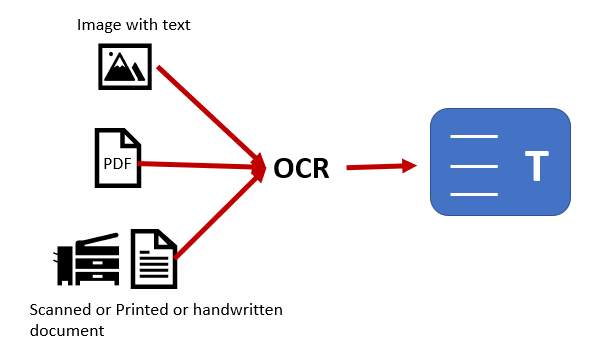
Businesses are looking for innovative ways to revolutionize their business workflows, boost efficiency & cut costs. Optical Character Recognition (OCR) is one such technology that has been gaining popularity.
It can help you convert different types of documents, such as images, scanned documents, & PDFs, into searchable & editable text. The good news is that it does so in real time. No more time-consuming & hectic data entry tasks!
In today’s guide, we’ll explore how this powerful technology can help businesses like yours. Here you go!

What is OCR Technology?
OCR technology uses the power of artificial intelligence & machine learning to convert an image to text instantly. You can copy, edit, search, & analyze the extracted text.
This means that you do not need to spend plenty of time manually extracting text from images; OCR tools have your back. They can assist you in saving your time & reducing the risk of human errors. Simply put, you can digitize paper documents in a few seconds & speed up the business workflows.
How can OCR Technology assist businesses in streamlining workflows?
This is how it can help you in business operations:
- Maximize Efficiency
OCR technology can help you improve the efficiency of your business by transforming all time-taking tasks of manual data entry. An image-to-text extraction tool can convert picture to text effortlessly. It eliminates the need for employees to manually input data by extracting text from images. This way, this tool allows you to save your time & reduce the risks of errors that come with manual data entry processes.
This automation speeds up the data entry jobs & allows your team to focus on other demanding tasks. So, an image-to-text converter is an essential tool to boost your productivity & propel your team to success.
Read more: How Can OCR Technology Help in Business- Improve Accuracy
An image-to-text converter allows you to extract text from the image into editable format. This saves you time. Additionally, it improves the accuracy of extracted data.
The tool employs OCR technology that recognizes & interprets text from images with precision. You don’t need to rely on manual resources to transcribe text from images. Therefore, the risk of manual errors dies down.
In addition, the OCR tools offer minimalistic interfaces that simplify the entire image-to-text conversion process. Even users with zero technical skills can access image-to-text converters for data extraction from images. Thus, these tools play a significant role in ensuring accurate data extraction.
- Save Money
You can cut down operational costs for your business with these tools. Businesses can save a considerable amount of money on labor costs that would otherwise be spent on hiring a resource manually.
Image-to-text converters automate the entire conversion of images into searchable & editable formats. You can use these tools to digitize documents. This way, you will not require any physical storage space for documents. Guess what?
This will also reduce paper costs because all important documents will be stored digitally on your computers. So one thing is clear OCR technology provides a cost-effective solution for businesses looking to optimize data entry processes, declutter physical papers, & save money.
- Enhanced Searchability
An image-to-text converter is designed to make your lives simpler & easier. By transforming scanned documents, pictures, & screenshots, it works its best to improve searchability within organizations.
Now, you don’t need to sift through bulks of paper to find a piece of information. With the tool by your side, a quick keyword search is all it takes to find what you need in the blink of an eye. Doesn’t it boost your productivity levels? Indeed, it does. When you have instant access to organized data, you can make wise decisions with confidence.
Hence, OCR technology is a great ally in revolutionizing the way we work & streamline processes.
- Automate Workflows
You can automate work processes by digitizing papers using optical character recognition technology & skyrocket efficiency. This is because you can accurately extract important information from the images with just a couple of clicks. This automation aces tasks.
When your business documents are digitized & data entry process is automated, you’ll have more time to focus on other significant tasks of your organization.
With OCR technology, you can enjoy smoother operations & quick decision-making.
Implement OCR technology in your Business
Now you have read the benefits of using OCR tools in your business operations; it’s time to leverage these tools.
Integration of a picture-to-text converter tool into your workflows is a simple process. There are a variety of tools available online that can help you extract text from images effortlessly. Some are free to use & others require a small investment. So you can choose the option that best fits your needs & budget.
However, make sure that the OCR tool you select has a straightforward interface with clear instructions on it. After that, the speed plays a major role in the conversion process. Try to choose a tool that has lightning-fast processing speed.
A good image-to-text converter is compatible with all operating systems & devices, allowing you to access it from anywhere.
Pro tip: Choose a tool that offers batch conversion.
Once you’ve handpicked a tool, you can start by digitizing your papers & training your team on how to use this sophisticated technology efficiently. By incorporating it into your daily routine tasks, you can enjoy the benefits of using it.
Conclusion
OCR technology is a mighty resource for businesses looking to digitize their operations & improve efficiency. By using an image-to-text converter tool, you can maximize efficiency, cut business costs, & enjoy other perks.
Whether you’re a small startup or a large corporation, integrating optical character recognition technology into your business will give you an edge over your competitors. So don’t wait; start exploring the endless possibilities of OCR tools & streamline your workflows.
































